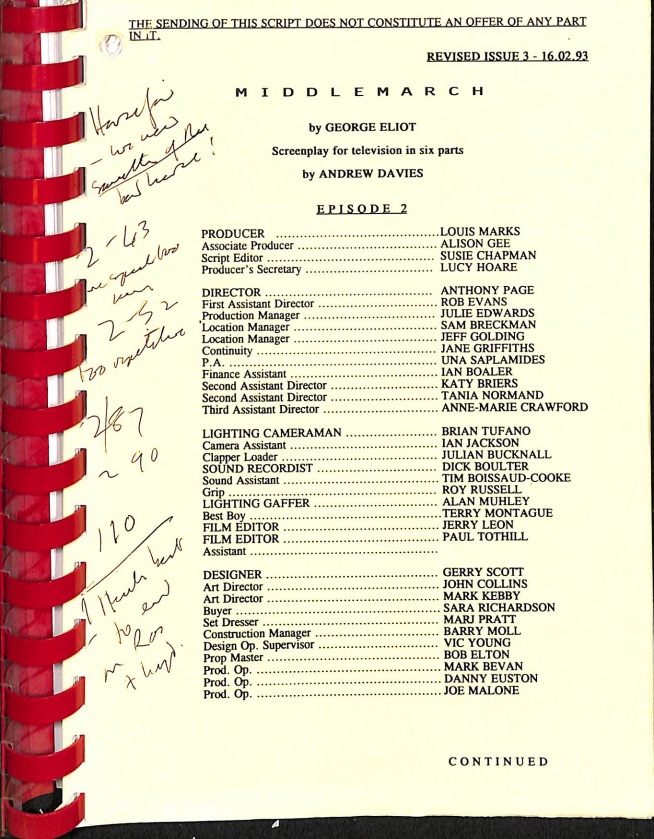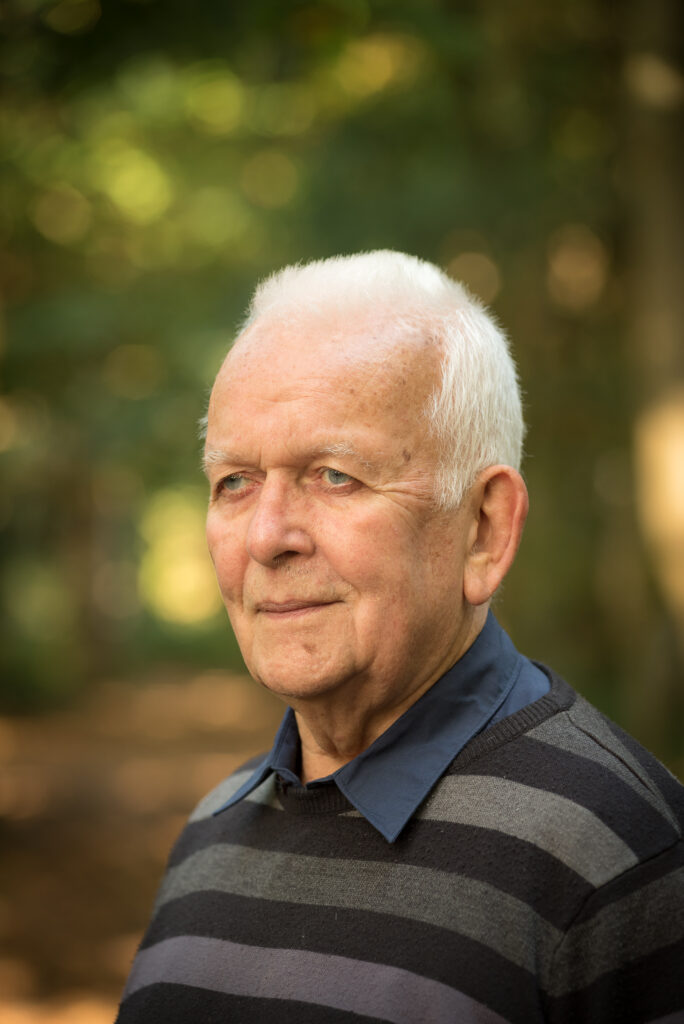Transforming Middlemarch
What goes into turning a literary classic like Middlemarch into popular TV drama? That was the question that inspired an interdisciplinary team of researchers based at De Montfort University Leicester who have created what is believed to be the first genetic edition of a screen adaptation.

Image: Lincolnshire County Council
The project, funded by the Arts and Humanities Research Council (AHRC) in partnership with the British Library and the University of Nottingham, has produced a website tracing the journey from book to screen, drawing on the scripts, notes and correspondence of celebrated screenwriter Andrew Davies, who adapted Middlemarch for the BBC in a 6-part series starring Juliet Aubrey, Douglas Hodge, and Rufus Sewell first aired in 1994.

2022 marked the 150th anniversary of the serialised publication of Middlemarch, so it was a timely choice from the back catalogue of the prolific Davies, who donated his personal archive to DMU’s Special Collections in 2015. Middlemarch (1994) also marked a watershed for the BBC. In partnership with WGBH (Boston), Michael Wearing (Head of Drama) gambled what was then a risky £6m on a lavish production shot on film and set on location (in Rome and the Lincolnshire town of Stamford) that was big on period detail. In turn, it spawned a raft of BBC Education resources, a (then unusual) ‘making of…’ documentary, and lively arts show critics’ debates; and it boosted Stamford’s tourist trade with location tours and a repertoire of visitor souvenirs. Following its success, Davies’ next BBC heritage adaptation was Pride and Prejudice (best remembered for that scene of Mr Darcy’s dip in the lake which doesn’t appear in Jane Austen). The rest, as they say, is history.

2 October 2018. Andrew Winford Davies portraits for Martha Stone Productions’ documentary
Picture Credit: IAN HOMER
What is a genetic edition? XML (Xtensible Markup Language) textual encoding enables new levels of insight to be gained from cross-referencing digitised documents. Here, the three core texts are the 1878 cabinet edition of George Eliot’s novel, the revised issue of Andrew Davies’ shooting script (dated 16.02.93) and the BBC post-production script (1994). The cabinet edition was supplied by project consultant Beverley Rilett, Director of the George Eliot Archive at the University of Auburn, Alabama. This version of the novel is closest to the W.J. Harvey Penguin Classics edition (1965) used by Andrew Davies.
All three texts are presented in the genetic edition in vertically scrolling columns, with the novel on the left, the shooting script in the middle, and the post-production script on the right. A fourth column in the right-hand margin contains editorial notes. The notes provide intertextual cross-references and links to a rich assortment of assets including audio and video clips, location photographs, production materials, script annotations, interviews with the key creative talents involved, and longer explanatory commentaries.

middlemarch.dmu.ac.uk/edition/
This genetic edition of Middlemarch not only reveals much about the collaborative process of screen adaptation, but provides readers with digital tools to investigate Eliot’s masterpiece in new ways. ‘Transforming Middlemarch’ can be accessed here. Happy browsing!
Justin Smith is Professor of Cinema and Television History at De Montfort University Leicester. He was Principal Investigator on the AHRC-funded project Transforming Middlemarch (2022-3).
